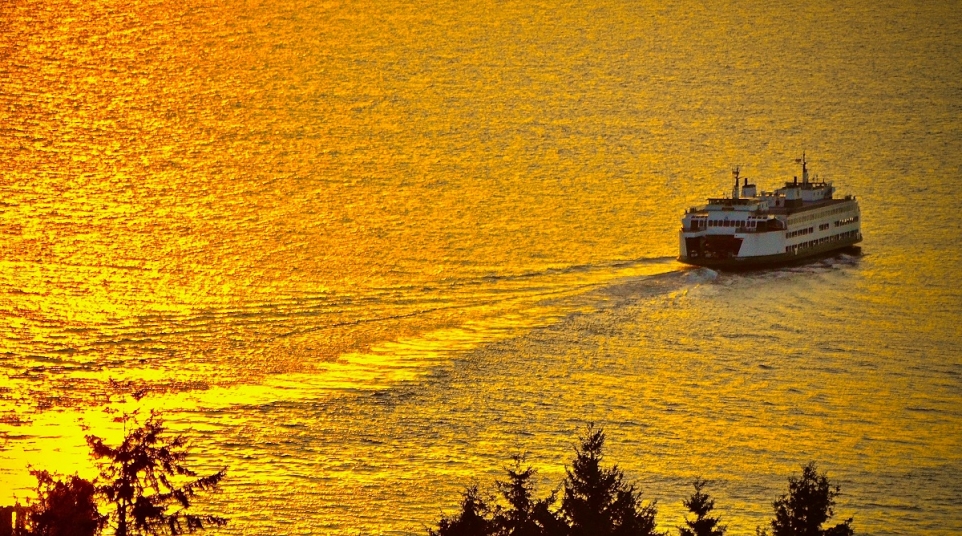On the night of Tuesday, May 28th, a Washington State Ferry collided with a juvenile humpback whale in the waters of Elliott Bay. The impact occurred mere minutes after the ferry’s scheduled 8:15 p.m. departure from Coleman Dock, in downtown Seattle.
Witnesses riding aboard the boat, at the time, reported seeing red water in the ship’s wake, and searches were conducted into the night, looking for either the injured whale or its remains. While neither was ever located, officials now assume that the accident proved fatal for the young humpback. Reports said that nobody onboard the ferry was injured.
Despite the frequency with which ferries traverse the waters in and around Washington, each day, this run-in was the first of its kind recorded between the state-operated ferries and any large marine mammal. That excellent record is owed in part to the vigilance of individual ferry crews, including those lookouts posted during poor conditions to watch for both hazards in the water and marine traffic. But it is also thanks to a “slow down” program implemented by the state and put into practice whenever whale sightings are reported in areas through which these ferries travel. That program is the reason that ferries traveling in the direction of Sidney, British Columbia, will slow down in the waters of the Haro Strait, both to watch for the presence of whales and also to reduce boat noise and minimize the impact that ferries have on the hunting patterns and abilities of nearby Southern Resident Killer Whales.
But no whale sightings had been reported in the area, on the night that the ferry collided with the humpback. The young whale simply surfaced in front of the boat, completely unexpected and leaving the crew with neither the time nor the distance needed to avoid an impact. Given their cruising speed of 16 ½ knots, ferries require two complete boat lengths or about 600 feet to come to a stop. Witnesses reported that this particular whale breached mere feet in front of the ferry, and officials say the crew likely could have done nothing else to avoid the strike.
As stated by Captain Brian Jonsson, who has run the same ferry route on which the humpback was struck, whales can be highly unpredictable when breaching and difficult to track in the water, making avoiding collisions difficult, even when crews have been forewarned that the marine mammals are nearby.
“They make their dive,” Jonsson said, “now where is it going to go? He could turn around, come around the same spot, 400 yards further down. They can go down 10-15 minutes. You can see him go down over there and who knows where he’s going to come up 10 minutes later.”
Ferry crews will still take any possible measures to avoid a strike. Some collisions, however, remain unavoidable. And such strikes may become more common occurrences, in the future, simply because whale numbers in this region are on the rise. The population of humpback whales, alone, has more than quadrupled along the coast of Washington, Oregon, and California since the late 1980s. That amounts to an incredible comeback for a species previously decimated in the heyday of legal whaling but does pose an increased future risk to ferries, their crews, and the whales, alike.
“This is a little bit of a good news/bad news story,” research biologist and whale expert, John Calambokidis, said. “ (…) With that recovery for humpback whales has come expansion and increased use of areas that overlap with human activities. That also poses a threat to them.”
In the wake of this particular accident, the West Coast Marine Mammal Stranding Network has remained on alert and on the lookout for the injured humpback.








Leave A Comment